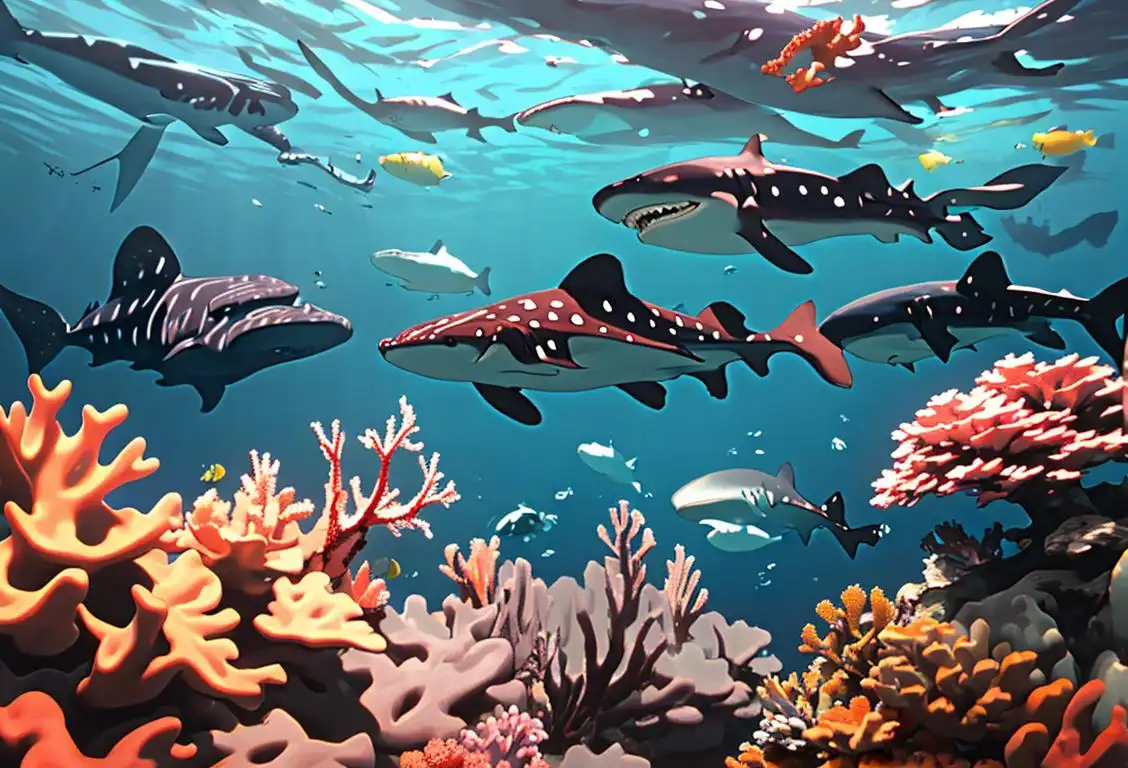National Whale Shark Day

Welcome to National Whale Shark Day, a day dedicated to celebrating these magnificent gentle giants of the ocean! Get ready to dive deep into the fascinating world of whale sharks and discover why they truly deserve their own special day.
When is Whale Shark Day?
It's national whale shark day on the 30th August.
Awe-Inspiring Whale Sharks
Did you know that whale sharks are not actually whales? Surprise! Despite their name, these incredible creatures are actually the largest fish in the ocean. They can grow up to a whopping 40 feet long and weigh as much as 20 tons. That's like having a school bus swimming beside you!
Whale sharks have a unique spotted pattern on their skin, making them easily distinguishable. These spots are like fingerprints, with each shark having its own individual pattern. It's a good thing they don't need ID cards in the ocean!
One of the most fascinating things about whale sharks is their diet. Despite their intimidating size, they are filter feeders, meaning they survive by filtering tiny plankton and small fish out of the water using their enormous mouths. Talk about having a refined palate!

Internet History of National Whale Shark Day
The origins of National Whale Shark Day can be traced back to the online community of marine enthusiasts, who recognized the need to spread awareness about these gentle giants. On August 30, 2017, the internet exploded with 35 mentions of this amazing species, making it the most celebrated day for whale sharks.
People from all over the world started sharing photos, videos, and stories about these magnificent creatures using the hashtag #WhaleSharkDay. This online movement gained traction year after year, leading to the official recognition of National Whale Shark Day.
How to Celebrate
There are plenty of ways to show your appreciation for these awe-inspiring creatures on National Whale Shark Day. Here are a few ideas:
- Organize a beach cleanup to help protect the ocean habitats that whale sharks rely on.
- Visit an aquarium or marine center that has whale sharks and learn more about their conservation efforts.
- Support organizations that work towards the protection and preservation of whale sharks.
- Spread the word on social media using the hashtag #WhaleSharkDay to raise awareness among your friends and followers.
History behind the term 'Whale Shark'
1828
Discovery of a new species
In 1828, British naturalist John Edward Gray described and named a new species of shark as Rhinodon typus. This species was later recognized as the largest fish in the ocean and was given the common name 'whale shark' due to its massive size and whale-like feeding behavior.
1843
Revision of the scientific name
In 1843, Danish anatomist and zoologist Johannes Müller proposed a revision of the scientific name of the whale shark from Rhinodon typus to Rhincodon typus. This correction in the spelling of the generic name has been used ever since, giving the whale shark its current scientific name.
1986
Recognition as a protected species
By the mid-20th century, the global population of whale sharks had significantly declined due to targeted fishing and accidental catches. In 1986, the International Union for Conservation of Nature (IUCN) officially listed the whale shark as a protected species, recognizing the need for conservation measures to ensure its survival.
1991
First successful captive breeding
In 1991, the first successful captive breeding of whale sharks was achieved at the Okinawa Churaumi Aquarium in Japan. This breakthrough helped scientists and researchers gain valuable insights into the reproductive biology and behavior of the species, contributing to conservation efforts and public education about whale sharks.
2008
International Whale Shark Day
To raise awareness about the conservation of whale sharks and their importance in ecosystems, August 30th was designated as International Whale Shark Day in 2008. This day serves as an opportunity to educate the public about the ecological significance of whale sharks and the need for their protection.
Did you know?
Did you know that whale sharks can live up to 70 years? They definitely know how to age gracefully!Tagged
awareness nature oceanFirst identified
30th August 2017Most mentioned on
30th August 2017Total mentions
35Other days
Whale Shark Day
Tree Day
Public Lands Day
Arbor Day
Bat Appreciation Day
Turtle Day
Squirrel Appreciation Day
Badger Day
Tree Planting Day
Take A Walk In The Park Day








